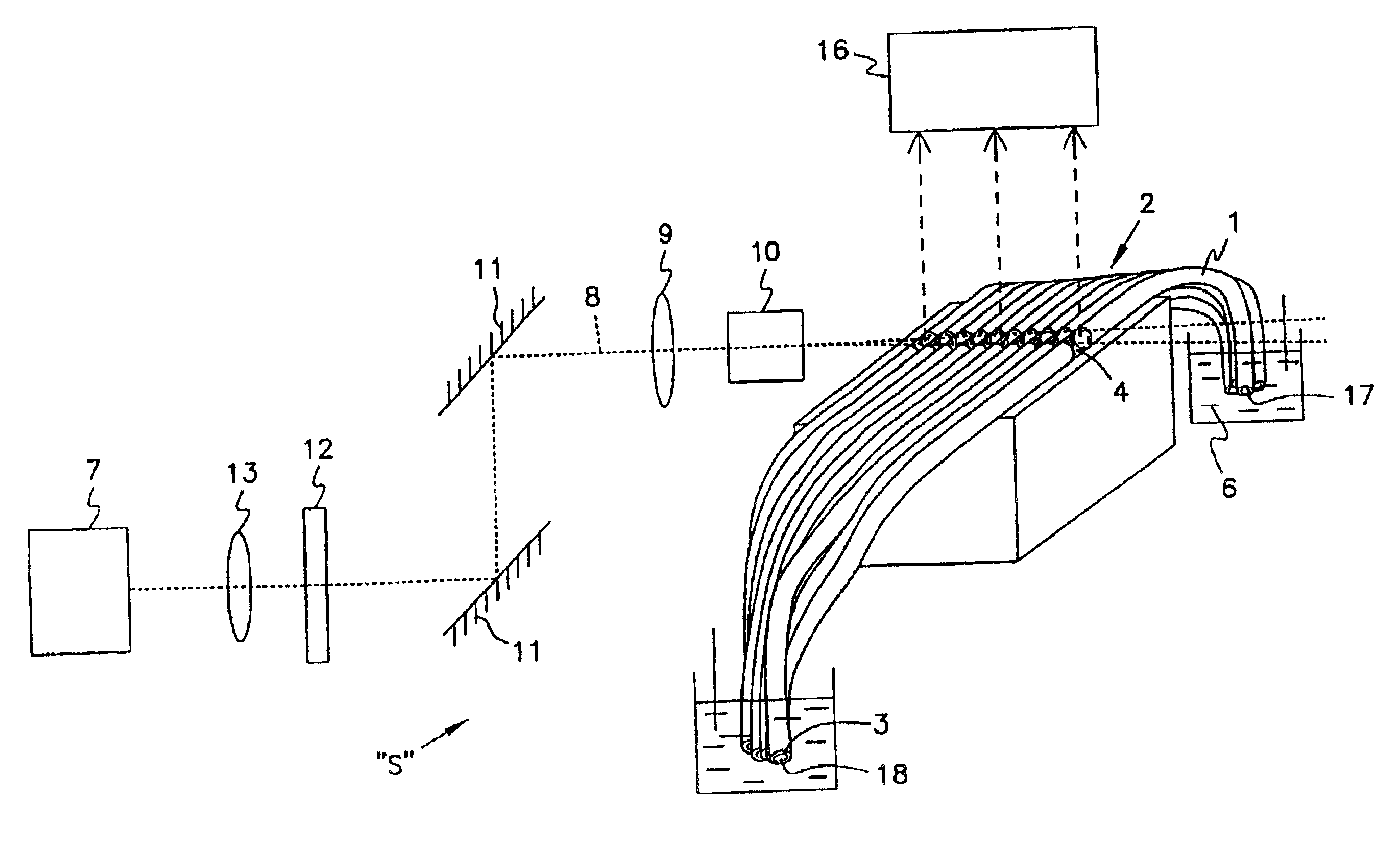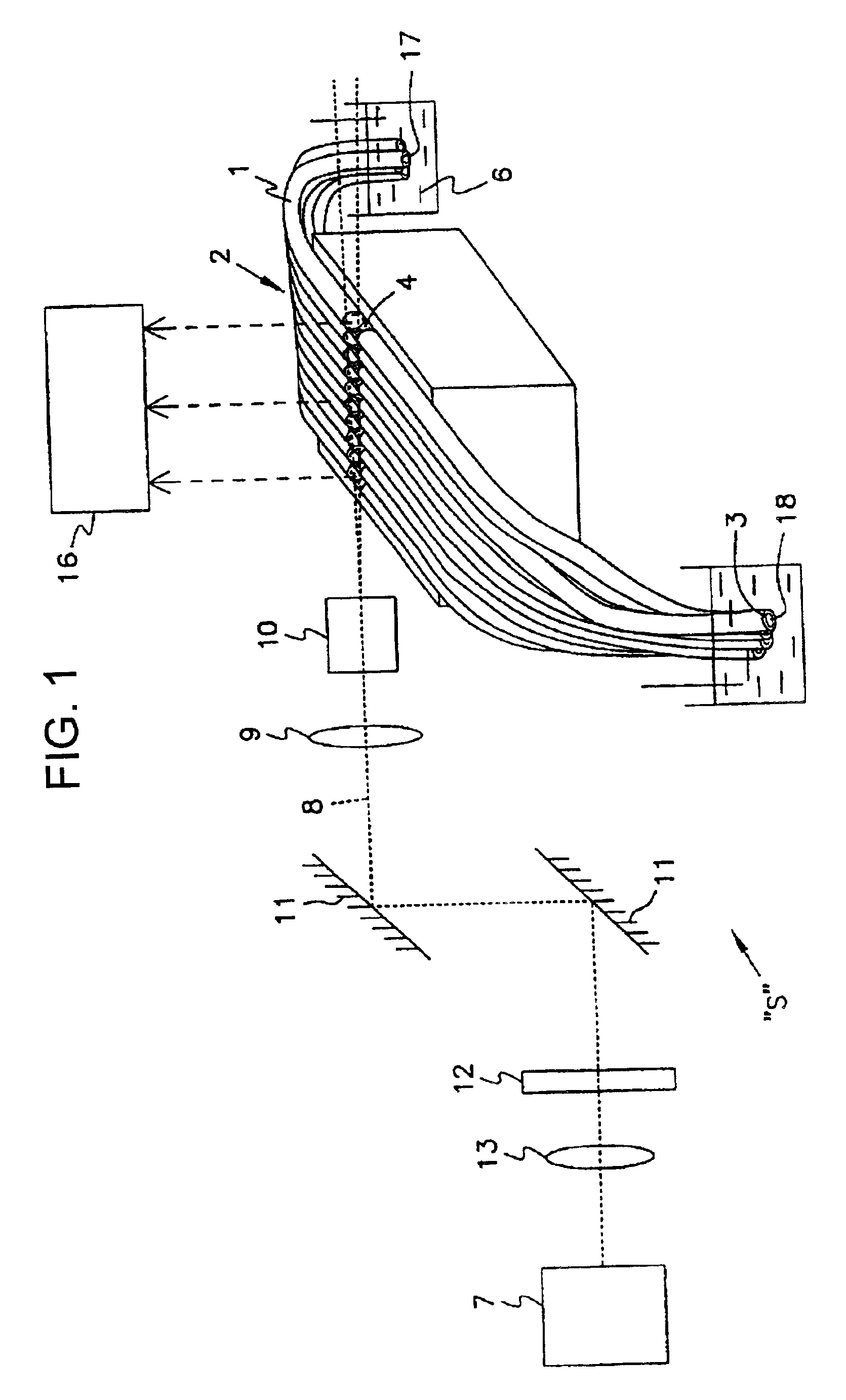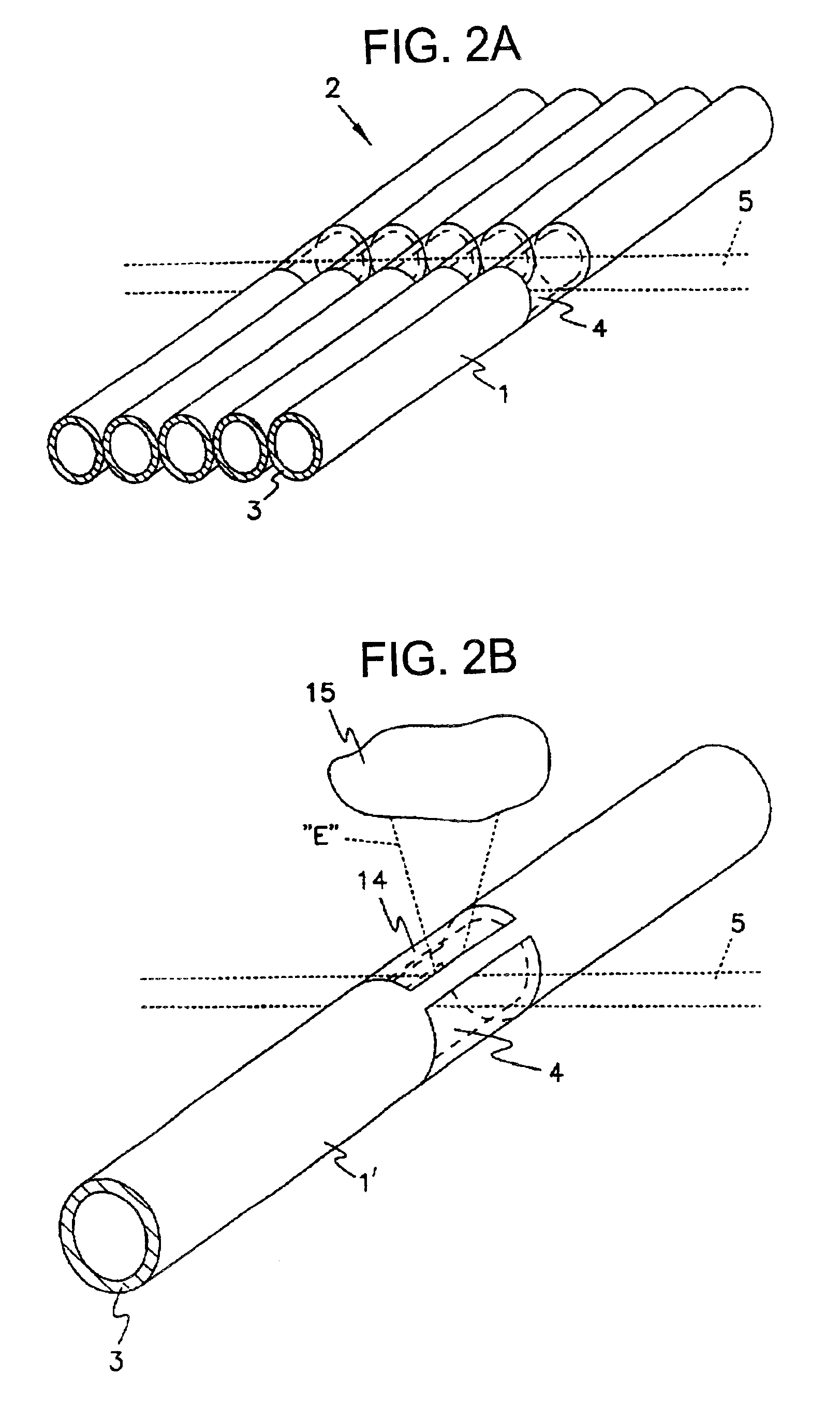Size separation of analytes using monomeric surfactants
a technology of monomer surfactants and analytes, applied in the direction of fluid pressure measurement, peptides, liquid/fluent solid measurement, etc., can solve the problems of deterioration of separation performance, inability to guarantee the stability of polymers, and relatively difficult use of polymeric sieving mediums most commonly used, etc., to achieve optimal size separation
- Summary
- Abstract
- Description
- Claims
- Application Information
AI Technical Summary
Benefits of technology
Problems solved by technology
Method used
Image
Examples
examples 1-5
utilize the present invention in a multiplexed capillary electrophoresis system employing fluorescence-based detection, employing the following Instrumentation and Chemicals and Materials.
CE instrument with laser-induced fluorescence (LIF) detection, built in-house, has been described in previous work (see Wei, W.; Yeung, E. S. J. Chromatogr. A 2000, 745, 221-230). Briefly, about 10-mW of 488-nm laser light from an argon-ion laser (Model Innova 90, Coherent, Palo Alto, Calif.) was used for excitation. The laser beam was focused on the detection region of the capillary by a 1-cm focal length lens at an angle of 90° to the laser beam. A 530-nm long-pass filter was used to eliminate the scattered light before imaging onto the photomultiplier tube (PMT). The fluorescence signal from the PMT was transferred directly through a 10-kΩ resistor to a 24-bit A / D converter (Lawson Labs, Kalispell, Mont.) and stored in a 486 / 33 computer at 4 Hz.
Fused-silica capillaries with 50-μm ...
example 1
This Example illustrates the role of surfactant concentration on separation performance. In a first set of test runs, samples containing 1-kb and 5-kb DNA ladders as markers were separated at different C16E6 concentrations using the Instrumentation previously described. Sample introduction, as well as the surfactant introduction prior to the sample introduction, was accomplished by pressure injection as disclosed in U.S. Pat. No. 5,741,411. FIG. 4 shows the concentration dependence on the separation limit (conditions: Leff=60 cm, E=250 V / cm, 1 μM TO in 100 mM HEPES-TEA buffer (pH 7.0), room temperature). In the FIG. 3 electropherograms labeled (a) and (b), the resolution for the 1-kb and 5-kb DNA ladders is poor at 0.1% of C16E6. When the concentration increases to 0.25%, both 1-kb and 5-kb ladders can be resolved well (see FIG. 4c and d). According to Eq. 15, when the concentration increases in the low concentration regime, {overscore (L)} increases and Dc decreases such that the s...
example 2
This Example further illustrates the effect of surfactant concentration on separation of DNA samples.
A set of test runs was conducted using samples containing a 6-FAM labeled 100-bp DNA ladder as a marker, with each test run attempting to resolve the 100-bp ladder under different concentrations of C16E6 (conditions: Leff=30 cm, 100 mM HEPES-TEA buffer (pH 7.0) with 6 M urea, E=250 V / cm). Again, sample introduction, as well as the surfactant introduction prior to the sample introduction, was accomplished by pressure injection as disclosed in U.S. Pat. No. 5,741,411.
Reptation curves (FIG. 5) were plotted at the surfactant concentrations used in the runs, i.e., 1.4, 4 and 6%. The mobilities were independent of dye:DNA ratio up to 1:5 and field strength up to 250 V / cm. The transition from the Ogston regime to the reptation regime (loss of linearity) was less evident at 250 V / cm for the low surfactant concentrations.
Once again, at the low concentrations, the separation limit is extended....
PUM
| Property | Measurement | Unit |
|---|---|---|
| Temperature | aaaaa | aaaaa |
| Capillary wave | aaaaa | aaaaa |
| Concentration | aaaaa | aaaaa |
Abstract
Description
Claims
Application Information
 Login to View More
Login to View More - R&D
- Intellectual Property
- Life Sciences
- Materials
- Tech Scout
- Unparalleled Data Quality
- Higher Quality Content
- 60% Fewer Hallucinations
Browse by: Latest US Patents, China's latest patents, Technical Efficacy Thesaurus, Application Domain, Technology Topic, Popular Technical Reports.
© 2025 PatSnap. All rights reserved.Legal|Privacy policy|Modern Slavery Act Transparency Statement|Sitemap|About US| Contact US: help@patsnap.com



